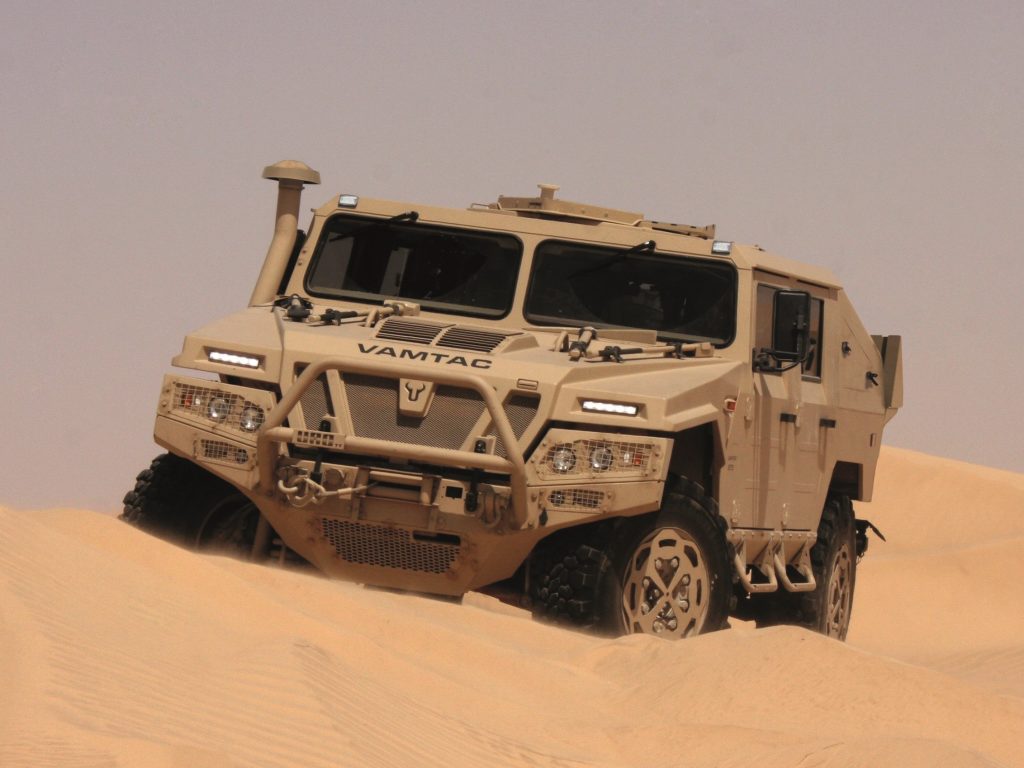Spain’s Urovesa is set to embark on the development of a cutting-edge hybrid hydrogen fuel cell vehicle known as Vamth. The Ministry of Defense has recently awarded Urovesa a contract worth 694,329.34 euros to pursue this innovative project, which seeks to integrate hydrogen fuel cell technology into the military’s trusted Vamtac vehicle.
The Vamth project emerged as one of the five initiatives selected to receive funding from the Ministry of Defense in 2022, under the Coincident program of the General Directorate of Armament and Material (DGAM). Collaborating with the National Hydrogen Center, Urovesa is poised to transform the Vamtac into a green hydrogen powerhouse.
The key objective of this transformation is to equip a military land platform with a hydrogen fuel cell propulsion system, ensuring it can still withstand the rigors of military operations. This innovative propulsion system must match or exceed the performance of traditional internal combustion engines in terms of autonomy, energy consumption, power transmission to the running gear, and more.
Furthermore, the Vamth project aims to provide a platform that not only satisfies its electrical power needs but can also serve as a power plant, exporting surplus energy to other defense systems or platforms. This multifaceted approach aligns with the growing demand for electrical power in military vehicles and equipment.
Spain’s Ministry of Defense is showcasing a clear commitment to sustainability and reducing dependence on fossil fuels, particularly from third-party countries. This commitment extends beyond the Vamth project. In a move to modernize its fleet, the Spanish Army recently closed a deal to acquire 1,049 hybrid and electric vehicles bearing zero environmental labels, at a cost of 48.5 million euros.
The vehicles, funded through the Next Generation EU program, consist of passenger cars and vans, all 100% electric or plug-in hybrids with a minimum range of 40 kilometers. This initiative marks a significant step toward upgrading the military’s vehicle fleet, replacing older, more polluting vehicles with new, eco-friendly alternatives. The electric and hybrid vehicles will be deployed for various tasks, enhancing operational efficiency while significantly reducing environmental impact.
As Spain takes notable strides towards greening its military vehicles, the development of the Vamth and the acquisition of electric and hybrid vehicles underscore the commitment of the Ministry of Defense to reducing the carbon footprint of its operations while embracing cutting-edge technology.
The Urovesa Vamth project is a testament to the growing importance of green hydrogen technology in military applications. As hydrogen continues to gain traction as a clean energy carrier, its integration into military vehicles represents an innovative step towards sustainability and a reduced reliance on fossil fuels. These initiatives may well set a precedent for other nations looking to modernize their military fleets while staying environmentally conscious.
Urovesa’s foray into green hydrogen-powered military vehicles is a step towards a cleaner, more sustainable defense fleet. The Vamth project’s success could lead to widespread adoption of green hydrogen technology in military applications, reducing carbon footprints and increasing operational efficiency.





